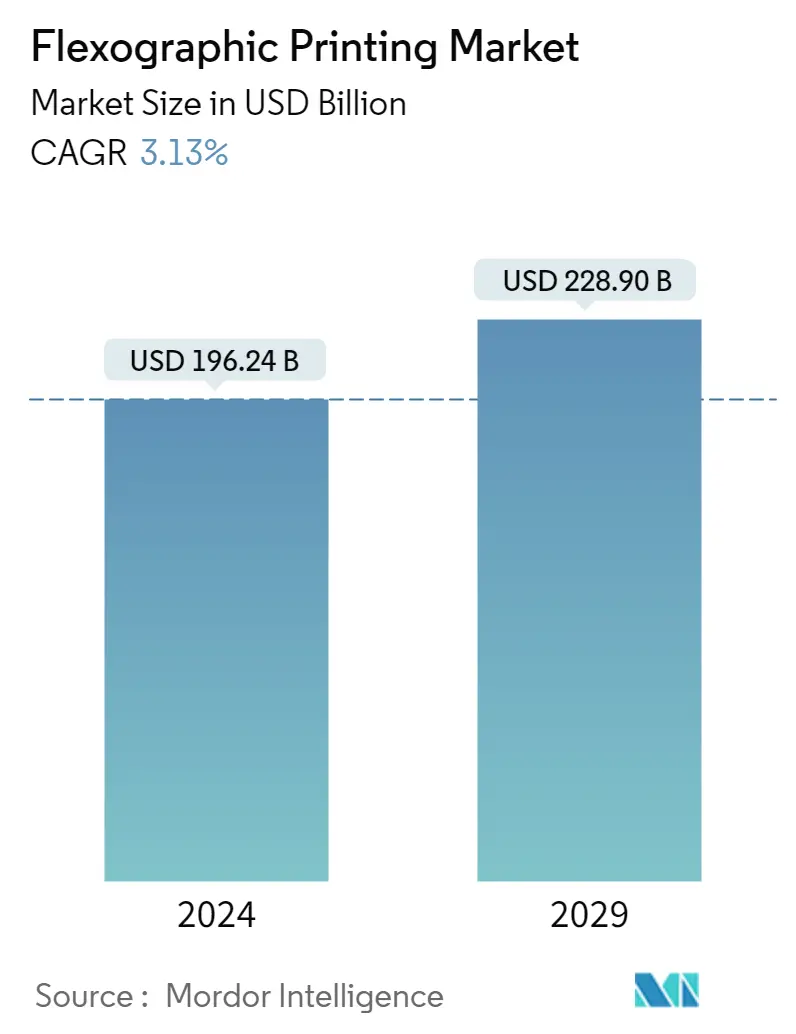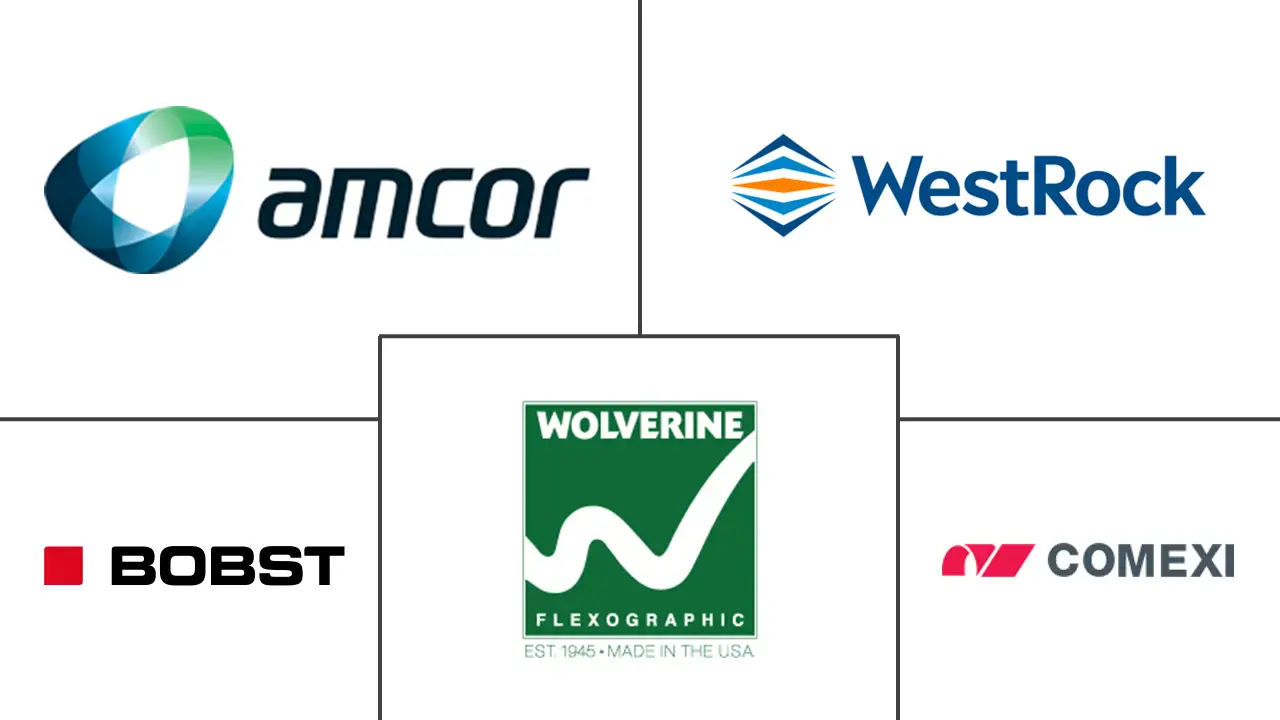Market Size of Flexographic Printing Industry

| Study Period | 2019 - 2029 |
| Market Size (2024) | USD 196.24 Billion |
| Market Size (2029) | USD 228.90 Billion |
| CAGR (2024 - 2029) | 3.13 % |
| Fastest Growing Market | Asia Pacific |
| Largest Market | Asia Pacific |
Major Players
*Disclaimer: Major Players sorted in no particular order |
Need a report that reflects how COVID-19 has impacted this market and its growth?
Flexographic Printing Market Analysis
The Flexographic Printing Market size is estimated at USD 196.24 billion in 2024, and is expected to reach USD 228.90 billion by 2029, growing at a CAGR of 3.13% during the forecast period (2024-2029).
The market for flexographic printing has gained significant attention in the packaging industry, where it is used for printing labels, cartons, and flexible plastics. The growth of industries such as food, beverage, and other packaging, is anticipated to aid the market for flexographic printing.
- Flexographic printing continues to be one of the fastest-growing print processes and is no longer reserved just for printing specialty items. The ability of flexography to print on a variety of substrates allows the process to be used for a wide range of printed products. Food packaging is an important market because of the ability of flexography to print on non-porous substrates.
- This ability makes it useful for printing on plastic bags, as well. The process is ideal for publishing packaging, wallpaper, calendars, books, laminated tetra paks, and food packaging. The material that receives the print, known as the substrate, can be paper, card, polymers, textiles, and even metalized films (polymers coated with a thin layer of metal).
- The increasing demand for a printing machine that can be used for a variety of substrates and other products with high versatility and ease of operation, particularly for rather long printing runs on all extensible plastic film, is expected to fuel the adoption of the flexographic printing machines, as flexographic printing machines can operate at high speeds and the have applicability on a different surface and water-based inks, as well as oil-based inks.
- Flexographic printing is one of the fastest-growing print processes and is no longer reserved for printing specialty items. The ability of flexography to print on a variety of substrates enables the process to be used for a wide range of printed products. Food packaging is a significant market because of the ability of flexography to print on non-porous substrates.
- Flexography provides principal benefits for customers using spot colors and finishing processes such as cold foiling, perforating, embossing, and laminating. Continued progress will likely decrease the costs of these value-added processes and make them extra mainstream.
- The outbreak of the COVID-19 pandemic resulted in growth in the e-commerce industry. Part of the packaging industry's new trends in the consumer's shift to e-commerce amidst the pandemic lockdowns. Online orders and delivery of goods and services were rising as people spent more time at home due to the fear of the coronavirus spreading. Furthermore, the Russia-Ukraine war has an impact on the overall packaging ecosystem.
